Nanci Griffith Love at the Five & Dime, recorded live at Anderson Fair in Houston in 1988. Such a talent.
Some quality potato bag design from Craig Potato in North Tryon.
Craig Potato operates with strong values and principles and a willingness to try new ideas to stay current in the potato industry. This outlook has not only been successful for the current generation, but the six previous generations.
Available at Riverview Country Market in Charlottetown.
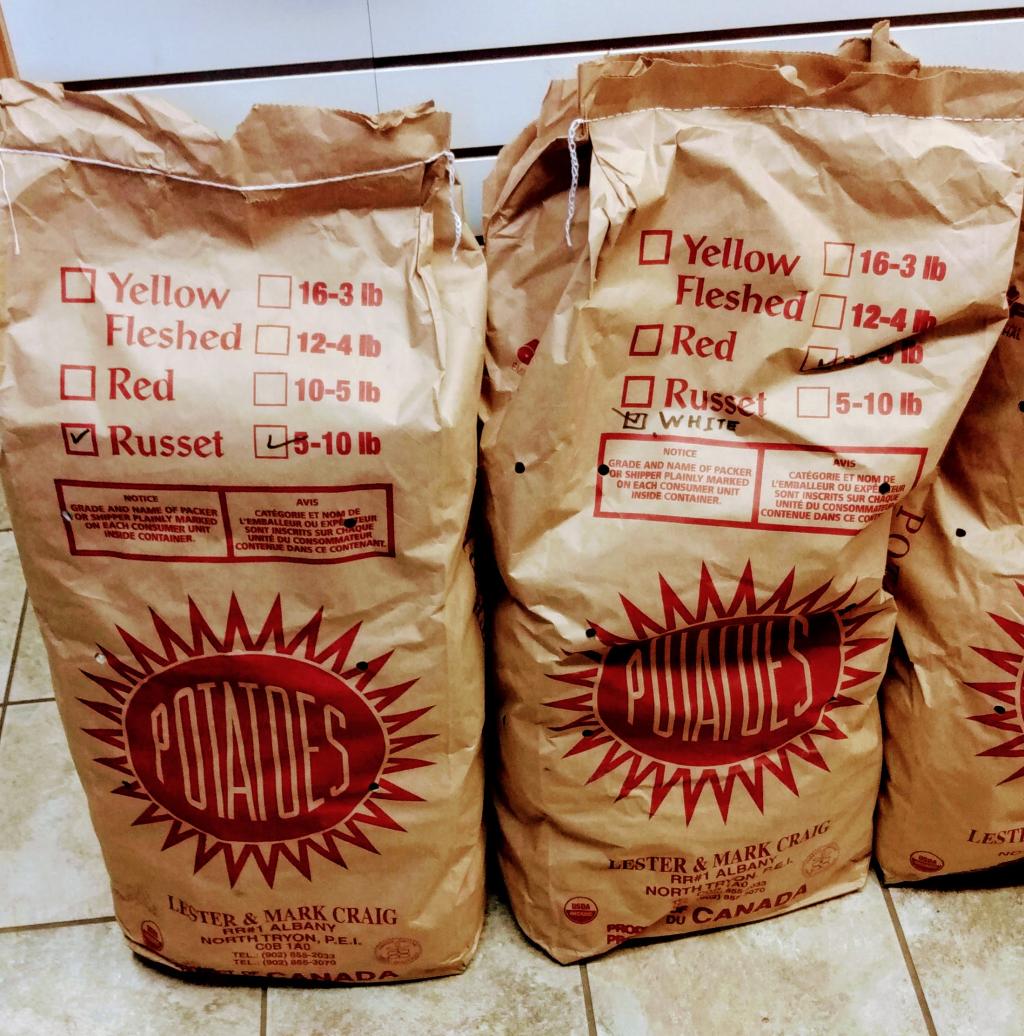
Libby Osgood is doing good work at the Mexico-US border, and writing about it.
Today, in part:
Halfway across the bridge to Mexico, while relaying my exciting adventure to another participant, I realized I left my passport in the car! I was stuck between two countries with a car full of food for Mexico! Luckily the bridge guard had seen me each day and kindly bent the rules, allowing me to return (definitely not allowed on the one-way bridge). I sprinted to the car, sprinted back, prepared to pay my dollar again but was welcomed in instead, and caught up with the team. My ashes were now bathed in sweat from running, but the coolness of the air was gone. I can’t say that i was scared at any point, but looking back, I should have been.
Oliver and I spent a frightfully short amount of time in Paris in the spring of 2009, no more than 24 hours. But I made sure we visited the Jardin du Luxembourg. As a Gopnikophile I was eager to see the carousel that figures so prominently in Paris to the Moon.
While sipping hot chocolate in the cold spring air, we stopped to watch the men play pétanque on the garden’s courts; what I failed to notice until today, when I looked at this photo of that morning, is that the court is outfitted with a purpose-built coat rack. For some reason I find that unbelievably delightful.
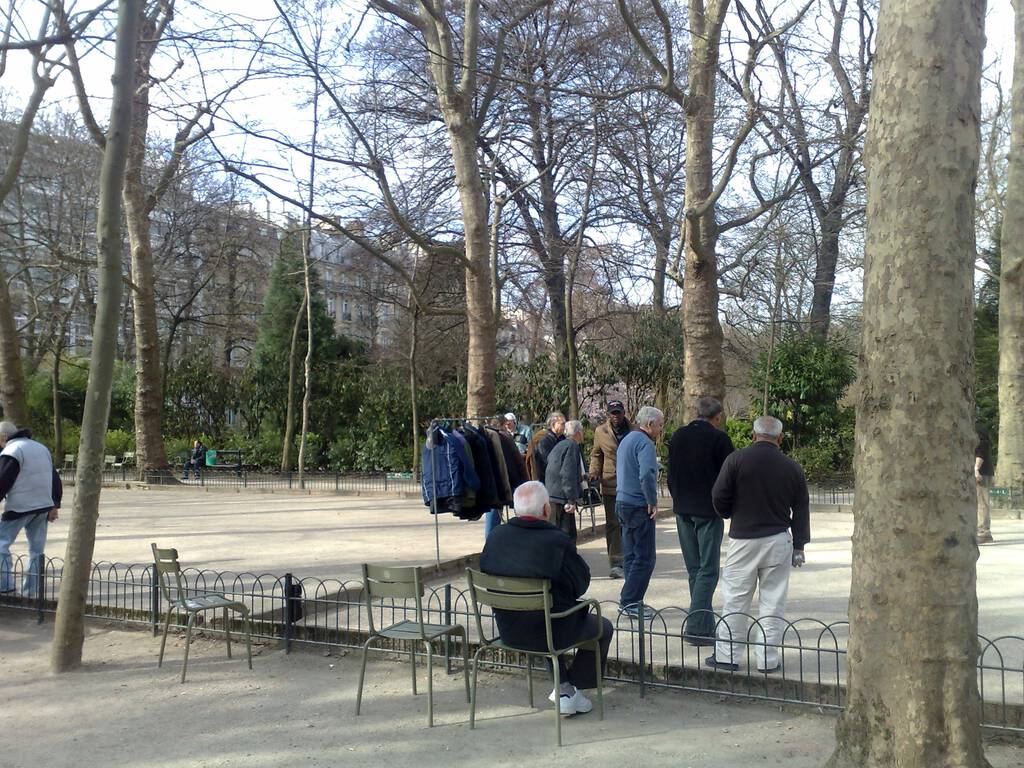
Because Catherine was enrolled in the Palliative Home Care Program, we could call paramedics anytime, and have them come, without lights and sirens. I think we ended up doing this about half a dozen times over 5 years, and it was invaluable.
A few times the paramedics ended up transporting Catherine to the Queen Elizabeth Hospital; most of the time, though, she was able to stay at home after they administered pain meds.
You wouldn’t think that calling 911 could ever become routine. But it did, in a way.
That said, having five paramedics squeezed into your living room on a Sunday night was an event worthy of marking. So I did, in comic form, a year ago tonight.
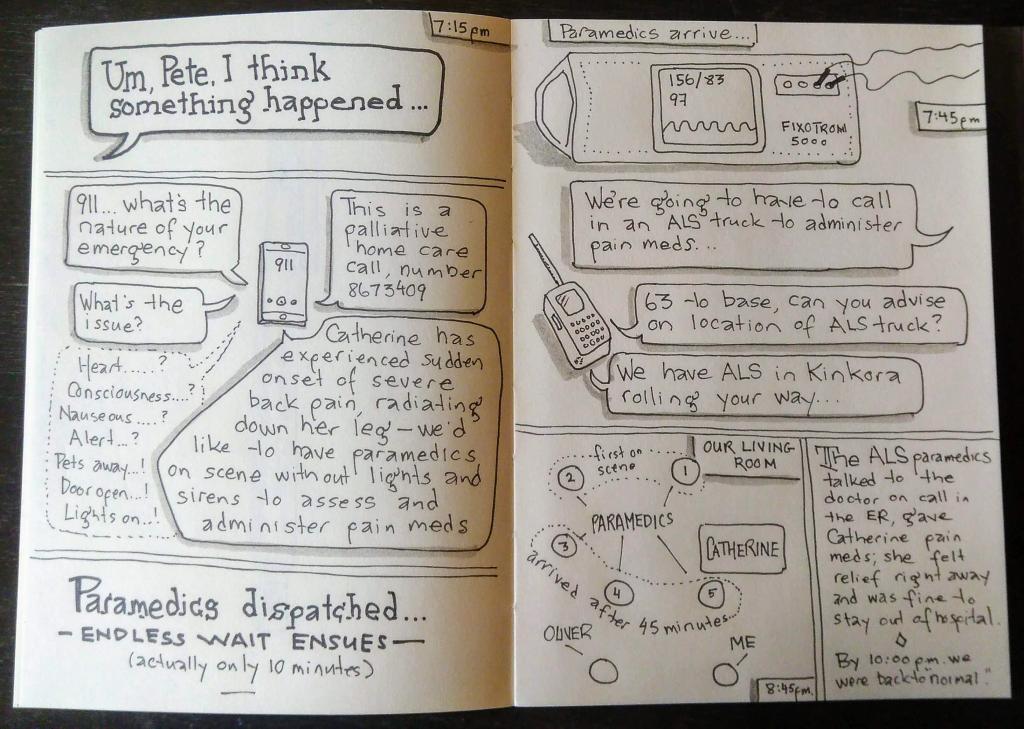
If there is one aspect of my father that I recall as a constant throughout his life as I knew it, it was his obsession with humidification.
It seemed he was always fussing with a humidifier or a dehumidifier. Emptying a tank. Filling a tank. Developing networks of tubes to automatically empty a tank. With results measured by humidistats in every room.
And, yes, I have followed in his footsteps.
His final humidifying gift to me was a tip to pick up an inexpensive travel humidifier from Home Hardware. He had two of them, and swore by them. Fed from any standard-mouthed pop bottle, the ultrasonic “Classic” model that he recommended sells for less than $30, and emits a pleasant mist of water vapour into its surroundings. Easy to fill, easy to move around, easy to clean.
Of course I bought one.
And then, last month, when Catherine was at the Palliative Care Centre, I noticed that the air there was very dry, and so I brought the Classic in, set it up above her bed, and her mother and I took turns keeping it refilled, day and night.
Volunteers, nurses, and doctors noticed it—it’s hard to miss because the vapour-emitting nozzle glows with a bright blue light—and decided that it was just the thing for other residents in need of humidification. So the handyman was despatched, and two were acquired. It makes me happy to think that they’re in service today, giving small comfort; a gift, both from Catherine, and from my father.
Oliver, alas, has come down with the head cold that seems to be going around.
“I can’t breathe,” he complained tonight before bed.
I knew just what was needed.
I rummaged around in the cardboard box that came home from Palliative Care—yes, I need to attend to that box—found the Classic, opened it up and gave it a clean, and it’s on Oliver’s bedside table tonight, giving small comfort.
Between that, and the VapoRub that Oliver insisted that I rub on his chest, because that’s what Catherine used to do, I feel tonight like I’m not, completely, parenting alone.

Halfway Tree from The East Pointers.
Meet me at Halfway Tree
Heart in your hand
Bask in our revelry
We’ll go dancing
We’ll keep dancing
The video is a little whirly for my tastes, but it’s a lovely song.
Parking pro-tip: if your car, truck or van is covering the sidewalk, you’re doing something wrong.
Imagine rolling down this Prince Street sidewalk on this bitterly cold day only to encounter this: your only options are to roll out into traffic, or to backtrack to Grafton Street, cross, and take the other sidewalk down.
This is a problem that’s 100% preventable by exercising thoughtful parking. Spread the word.
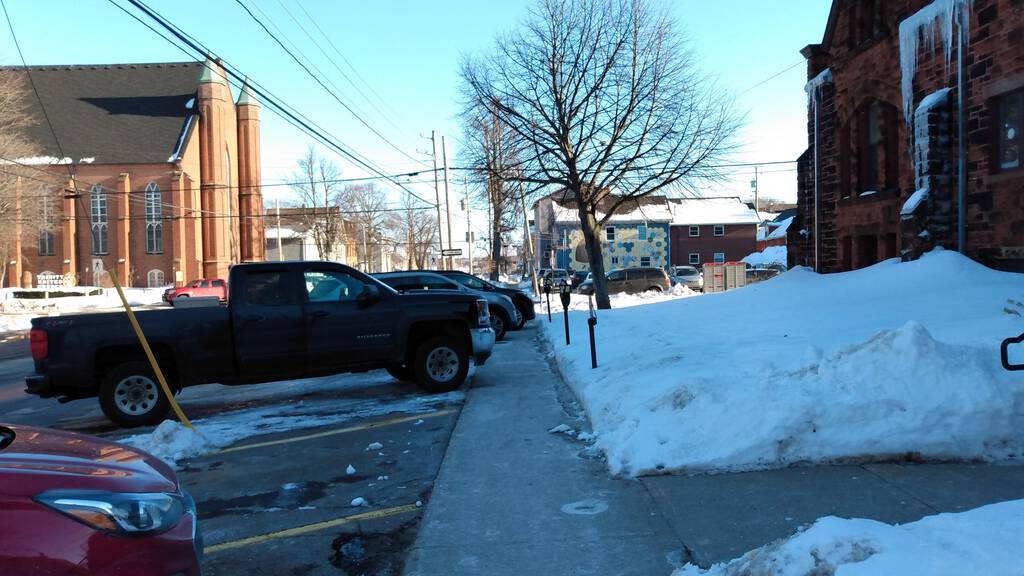
When Confederation Bridge opened in 1997, a development called Gateway Village opened with it, on the Prince Edward Island side, in Borden-Carleton.
Part of Gateway Village was an interpretive centre: a combination exhibit, museum, introduction to the Island, and art installation.
Catherine, along with Lynn Douglas, was commissioned to create a piece for the centre, a large sphere constructed from witherod around a metal frame by Catherine, covered in hanging fibre human figures created by Lynn.
It looked like this, once it was installed:
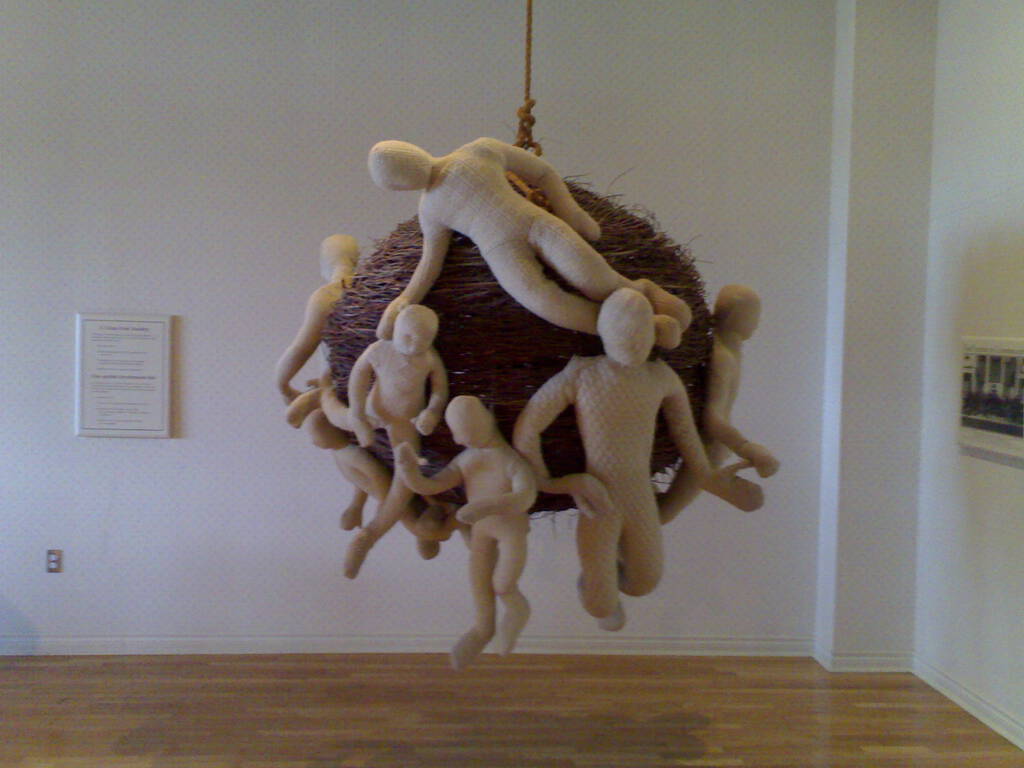
Catherine suffered for this art: she needed to gather all the witherod herself, and she did this in the fields around our house on the Kingston Road. One winter afternoon she was out gathering near the creek that runs parallel to the Bannockburn Road and she fell through the ice. The water was shallow, so she was in no danger of getting stuck. But she was chilled through to her core, and she carried that chill with her for the rest of her life.
At some point after 1997, the interpretive centre at Gateway Village was razed, replaced with other touristic infrastructure. It was a great assault against the artists and craftspeople who’d contributed exhibits, installations, music and film to the project. And, what’s worse, it seems like nobody knows what happened to everything that had been installed: the “basket ball” was never seen again, and we have never found anyone who could tell us what became of it.
Does anyone in the readership have any idea, or know of someone who might?
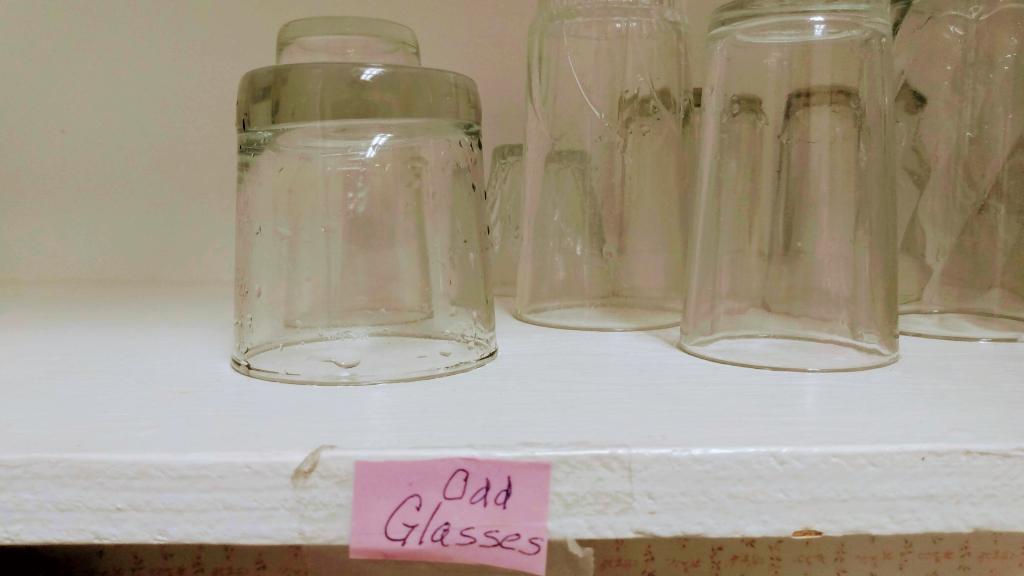
 I am
I am